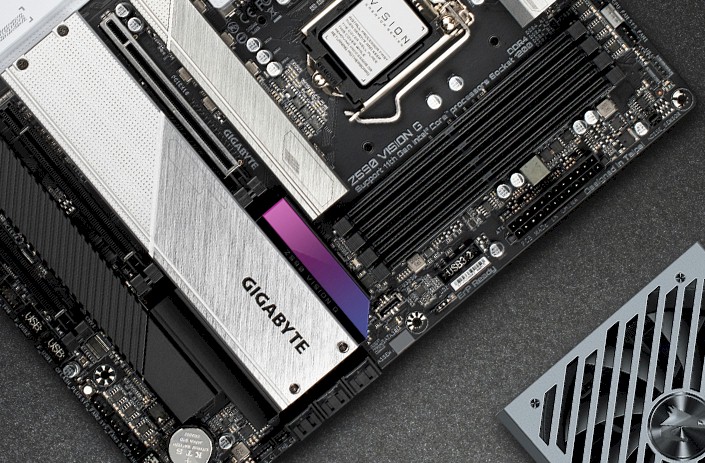Gigabyte Technology’s enterprise server division has been spun off under a new logo: Giga Computing.
While perhaps best known for its enthusiast, workstation, and gaming motherboard and graphics products, Gigabyte is no stranger to the server and datacenter arena. Alongside consumer-focused boards, Gigabyte also operates as an original design manufacturer developing components like motherboards for OEMs and producing white box systems for cloud and hyperscale customers.
Among Gigabyte’s more notable customers is Yandex – also known as the Google of Russia. However, Russia’s illegal invasion of Ukraine may have thrown a wrench in that deal.
According to Gigabyte, spinning off Giga Computing won’t have a material impact on day-to-day operations. The new company will be owned in its entirety by Gigabyte after all, and they about say as much. The good news for existing customers is this means there shouldn’t be any disruptions to service and or procurement. Gigabyte claims the newly formed subsidiary will continue to maintain and support all existing enterprise products and solutions.
Instead, it appears Gigabyte’s decision to form Giga Computing may have been an effort to separate its concerns and allow the parent company to focus its energy on consumer electronics like GPUs, laptops, desktops, and other PC components. Based on their finances, this makes a lot of sense. The company’s motherboard and graphics business accounted for roughly three-quarters of their annual revenues in 2021.
The move mirrors that of other prominent OEMs whose logos span the consumer and enterprise spaces. Hewlett Packard Enterprise’s 2015 split from HP, which makes PCs and printers, springs to mind. However, whereas HPE was already a leading OEM at the time, Gigabyte is not. With that said, it is obvious the company sees Giga Computing as means to changing that.
In its most recent annual earnings report, Gigabyte emphasized a desire to move beyond its ODM business and deeper into the channel end market. In a June financial filing, Gigabyte took its first step towards going just that, revealing its plans to spin off its Netcom business as Giga Computing Technology Co., with the express goal of improving “the competitiveness and operating performance,” of its server and networking business unit.
But the company has a long way to go. Despite the fact Giga Computing is valued at approximately NT$833,600,000, or about $27 million adjusting for exchange rates. The wholly owned Gigabyte subsidiary didn’t make the list of top server OEMs or ODMs in IDC’s latest server market report. In an email to The Next Platform, IDC says Gigabyte’s share of the ODM-Direct market is less than 1 percent.
In 2021, Gigabyte reported revenues of approximately $4 billion, however only a fraction of that was from server sales. Gigabyte classifies its Netcom business under approximately $1 billion of “other” revenues, which in addition to servers includes its laptop and peripheral business. However, some estimates put Gigabyte’s server biz in the neighborhood of 25 percent of revenues – or just shy of $800 million a year.
Based on IDCs figures, that would make Giga Computing less than half the size of Inventec’s server business ($2.1 billion) and about a third the size of Supermicro’s server businesses ($2.5 billion).
While Giga Computing may not be the biggest player in the server space, it is also not the smallest and the company has been keen to push next-gen computing platforming. Last year, Gigabyte announced a flurry of high-performance compute, AI, and communications platforms running on everything from your standard X86 fare from AMD and Intel to more exotic systems using Nvidia A100 and AMD’s MI250 GPU accelerators as well as Arm-based systems using Ampere’s Altra and Altra Max CPUs.
The company has also embraced next-gen cooling tech including direct liquid cooled GPU servers, and both single- and two-phase immersion cooling tanks. The latter tech submerges server chassis in a vat of non-conductive fluids – typically a synthetic oil from Exxon or Castrol or specialized refrigerants from the likes of 3M.
The company is clearly determined to carve out a niche as demand for systems grows more diverse and specialized.

